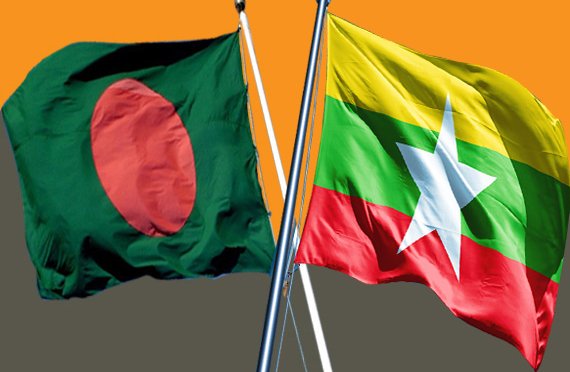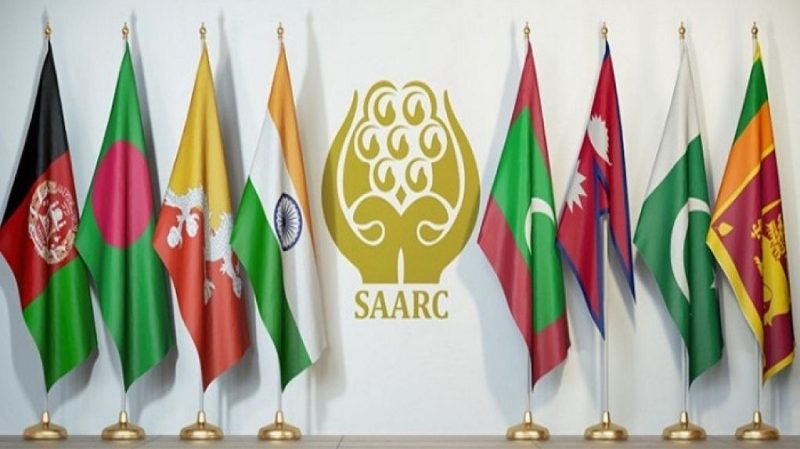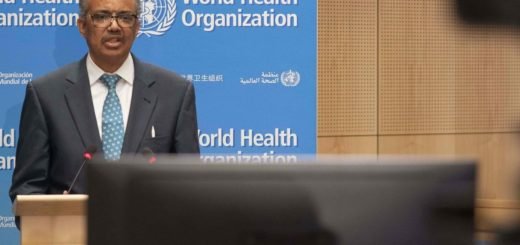Myanmar-Bangladesh ties could unite ASEAN and SAARC free trade zones

Myanmar is one of Bangladesh’s closest neighbours with historic connectivity going back centuries. The 271 km long Bangladesh-Myanmar border is very important for Bangladesh due to its strategic position, although at present the area is militarized due to its ongoing internal conflicts. Were this to be resolved, Bangladesh could develop routes via Myanmar to access China to the east, and other southeast Asian countries to the south.
Myanmar can also use Bangladesh as a transportation route to reach markets such as Nepal, Bhutan, and India. Both Bangladesh and Myanmar are members of the Bay of Bengal Initiative for Multi-Sectoral Technical and Economic Cooperation (BIMSTEC), an organization consisting of Bangladesh, Bhutan, India, Myanmar, Nepal, Sri Lanka, and Thailand that seeks to foster regional and economic cooperation.
Bangladesh is a Southeast Asian country and can be used as an important hub to connect ASEAN and the South Asian Association for Regional Cooperation (SAARC) members of Afghanistan, Bangladesh, Bhutan, India, Maldives, Nepal, Pakistan, and Sri Lanka is difficult. Myanmar too, as an ASEAN member, can access the SAARC free-trade bloc through Bangladesh. In such a way, most of the countries of South-East Asia and South Asia would be benefitted economically to boost up their trade ties. From Indonesia-Malaysia- Brunei-Singapore-Philippines– Laos-Cambodia-Vietnam-Thailand- Myanmar to Bangladesh-India-Pakistan-Sri Lanka-Maldives-Nepal-Bhutan-even Afghanistan, all states will be able to ensure its maximum business interest.
Cooperation in trade and energy
There are other routes to bilateral cooperation. Myanmar is rich in natural resources such as tin, zinc, copper, tungsten, coal, marble, limestone, natural gas, and hydropower, etc. Myanmar could thus be a major source of energy for Bangladesh to ensure its energy security.
Furthermore, grains such as rice are produced in large quantities in Myanmar which can also be exported to Bangladesh. Rice production in the country accounts for approximately 43 per cent of its total agricultural production, making it the seventh-largest producer of rice in the world. Out of 67.6 million hectares of land, 12.8 million are used for cultivation. In 2019 alone, Myanmar accounted for 13,300 million metric tons of milled rice production. Rice production in Myanmar is heavily dependent on the traditional methods of cultivation.

Myanmar is also a large producer of agricultural products. During Bangladesh’s onion crisis with India in 2019, Myanmar provided onions to Bangladesh. Bangladesh understood the importance of bilateral trade with Myanmar at that time.
If Bangladesh improves its relations with Myanmar, its dependence on India could be reduced and could increase trade with other countries in Southeast Asia.
Myanmar is also a major supplier of natural wood to the world. While attracting foreign investment has been limited to the oil and gas sector, the country has recently shifted its focus to attracting production-based investment. The country is well ahead in power generation due to good investment in hydropower generation. The tourism industry is also a promising sector of the country.
Through the import of gas and electricity, Bangladesh can obtain its future energy security. The two countries can jointly explore oil and gas fields in the Bay of Bengal. Bangladesh can also contribute to the development of Myanmar’s infrastructure.
Both countries have also resolved a dispute over their maritime borders through the International Court of Justice. As a result, the rights of Bangladesh have been established in an area of 1,11,000 square kilometres. Myanmar’s waters have also been properly identified.
The proposed construction of the Asian Highway, funded by the Asian Development Bank can increase land connectivity between the two countries and increase trade in products such as fertilizers, plastics, cement, and furniture, etc.
Myanmar, which at present does have sophisticated manufacturing, can import electronics and pharmaceutical products that are readily produced from Bangladesh and benefit from the technology transfer.
China and ASEAN
China is now the biggest investor in Myanmar. China has invested over US$3 billion since the 2016-2017 fiscal year. One of the most strategic components of these investments is the US$1.3 billion Kyaukphyu deep seaport, which when completed, can provide China’s Yunnan province with a shortcut to the Indian Ocean.

The country’s biggest economic advantage for Myanmar is that they are a member of ASEAN. ASEAN controls about 24 per cent of total world trade and its share in world trade are growing yearly. ASEAN’s trade relations with China, Japan, and South Korea are deepening due to the increase in trade and the upcoming RCEP agreement. ASEAN countries account for more than 50 per cent of total trade between themselves and these three countries.
Bangladesh is keen to assist Myanmar. Covid-19 vaccine distribution and counter-terrorism training are some areas for cooperation. The Rohingya refugee problem has, however, created some tension between the two countries, and find the solution can serve the longer-term interests of Bangladesh and Myanmar. Myanmar and Bangladesh should solve this problem to serve their own and regional interest. Myanmar should understand that it is the issue of the region. Whole South Asia and South East Asia may be volatile for this problem.
However, the two countries can also increase productivity in the agricultural sector through joint ventures. Apart from adopting joint investment projects, Bangladesh can increase imports of various agricultural products including pulses, spices, fish and rice. Thus, enhancing bilateral relations could contribute to the growth of trade and investment relations with ASEAN and BIMSTEC countries. This will create an opportunity to solve the Rohingya problem and stop militant activities. Therefore, Myanmar should take effective steps to strengthen bilateral relations to connect South East Asia with South Asia.


















